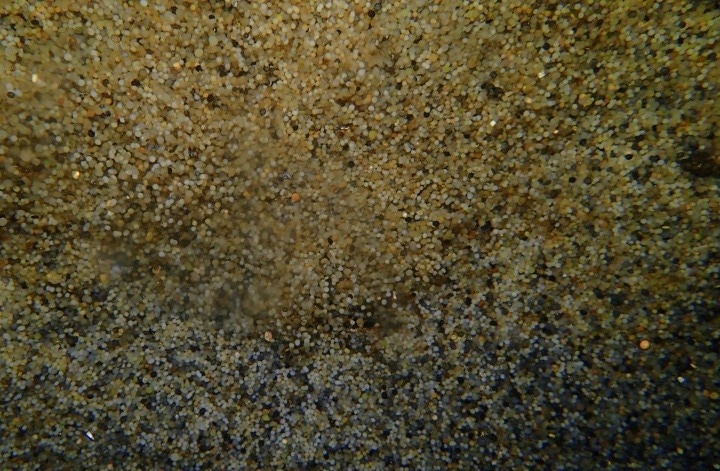The oceans’ surface is covered with more than five billion plastic particles, which harm wildlife, the delicate underwater ecology, and even the climate. Up until now, it was only possible to identify how long plastic takes to entirely degrade by extrapolating from laboratory data.
 Plastic pellets in the wreck: 20 years after the disaster the degradation underwater was barely underway. Image Credit: WiTUS/Franz Brümmer.
Plastic pellets in the wreck: 20 years after the disaster the degradation underwater was barely underway. Image Credit: WiTUS/Franz Brümmer.
However, recent studies on plastic pellets spilled in a shipwreck in the Red Sea were undertaken by scientists at the University of Stuttgart. This has improved knowledge of how plastic ages. On July 13th, 2022, the findings were published in “Scientific Reports.”
It was a shipwreck for scientific purposes. The cargo ship SS Hamada split in two and sank in the middle of a nature reserve in June 1993 after suffering serious damage in rough waves above a coral reef off the coast of Egypt. It was carrying plastic granules at the time. However, the catastrophe also presented an opportunity.
While some of the plastic pellets washed up on the shore, most were trapped inside the wreck’s waterlogged holds. For the first time, researchers had the chance to compare the disintegration of the plastic pellets under a wide range of settings.
One of the most used plastics, polyethylene, was previously predicted to take between many centuries and many millennia to totally dissolve in the oceans. However, because the extrapolations are mostly based on laboratory studies, these numbers are surrounded by a great deal of uncertainty.
“Long-term studies on the degradation of plastic in the oceans have been lacking up to now because, among other things, it is not possible to determine the precise age of the plastic waste,” says Professor Dr. Franz Brümmer and Uwe Schnepf from the Institute of Biomaterials and Biomolecular Systems (IBBS) at the University of Stuttgart.
The two researchers are in charge of a group that comprises the German Aerospace Center (DLR), the Scientific Diving Group (WiTUS), the Institute of Polymer Technology at the University of Stuttgart, and an Egyptian collaboration partner. Plastic granules were first gathered in 2016 from the shoreline and the wreck (during research dives). The consortium then used various techniques to analyze these pellet samples.
Large Differences in Degradation
The mechanical, chemical, and microscopic testing soon identified significant variations in the degradation processes.
“While the degradation of the plastic pellets on the beach is already in full swing, the plastic pellets trapped in the wreck at 18 m below water show hardly any signs of degradation,” say Brümmer and Schnepf.
The Stuttgart study’s findings thus add to a greater understanding of how various environmental conditions, such as UV light, high temperatures, and significant temperature fluctuations, affect the aging of plastic and give more precise information about how plastics degrade in the ocean.
Journal Reference:
Brümmer, F., et al. (2022) In situ laboratory for plastic degradation in the Red Sea. Scientific Reports. doi.org/10.1038/s41598-022-15310-7.